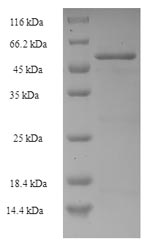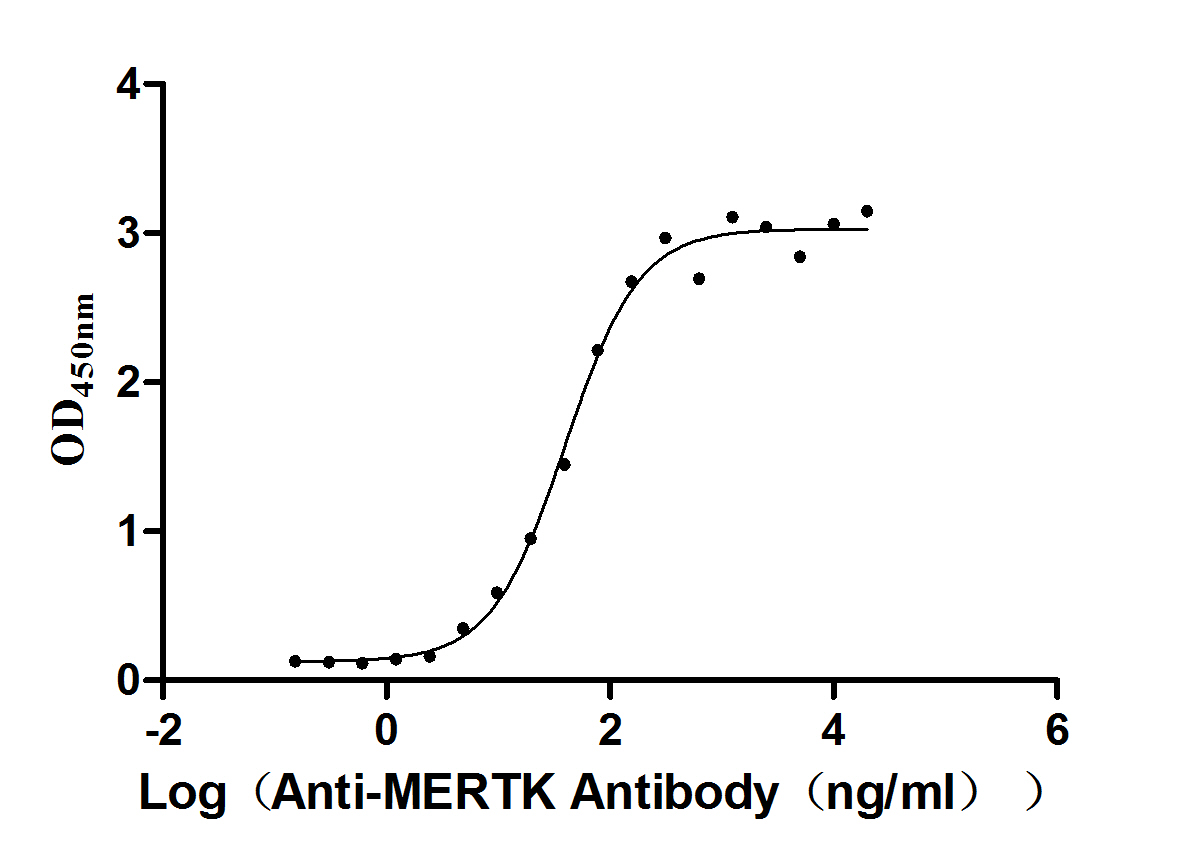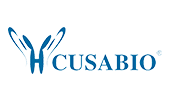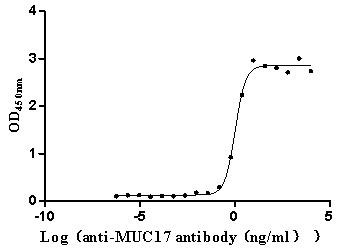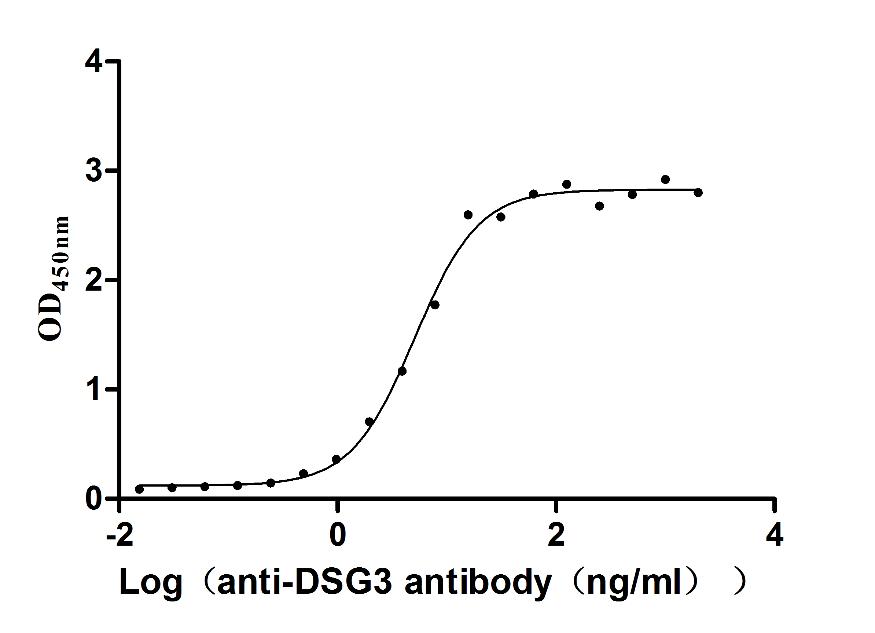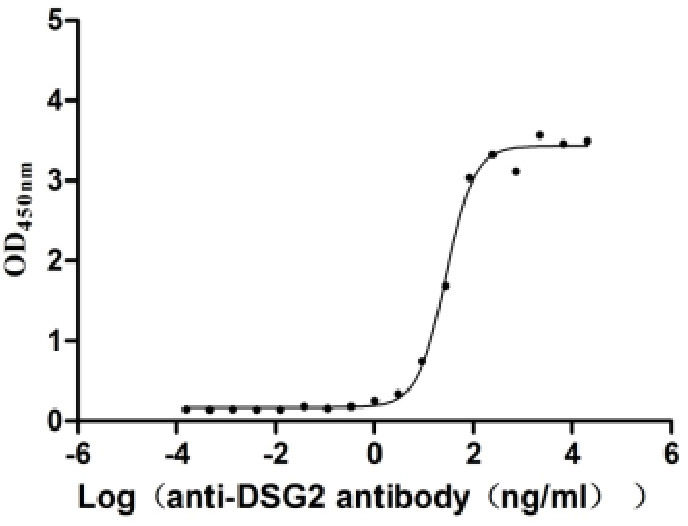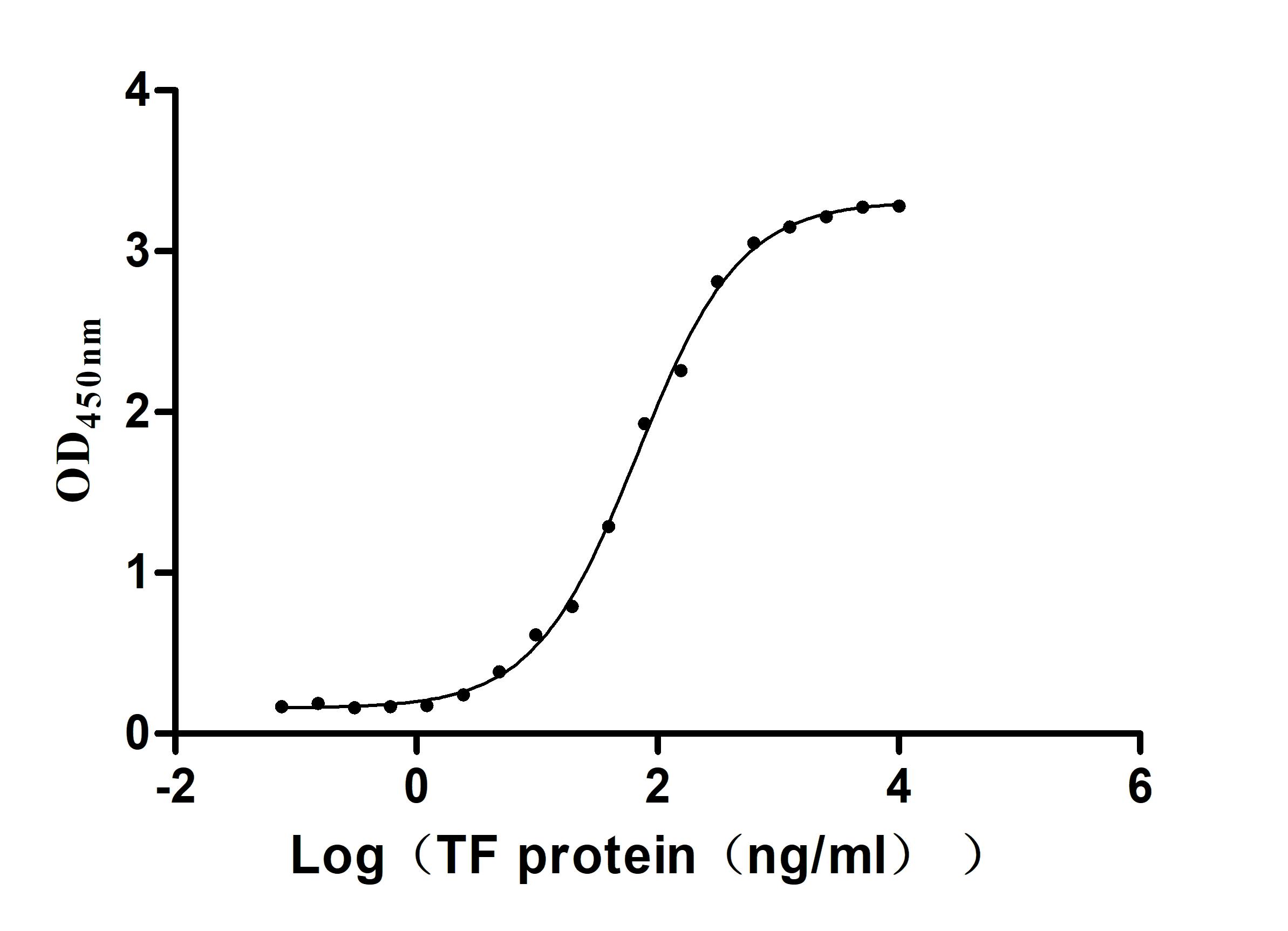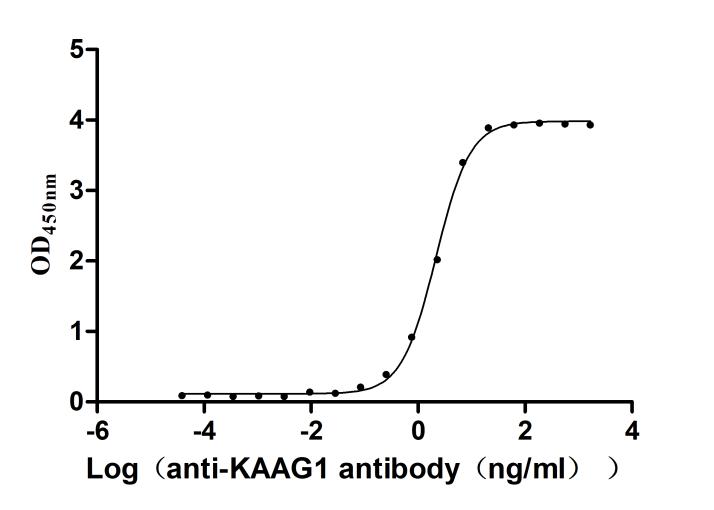Recombinant Escherichia coli Methyl-accepting chemotaxis protein II (tar), partial
-
中文名稱:大腸桿菌tar重組蛋白
-
貨號:CSB-EP356999ENV
-
規(guī)格:¥2328
-
圖片:
-
其他:
產(chǎn)品詳情
-
純度:Greater than 90% as determined by SDS-PAGE.
-
基因名:tar
-
Uniprot No.:
-
別名:tar; cheM; b1886; JW1875Methyl-accepting chemotaxis protein II; MCP-II; Aspartate chemoreceptor protein
-
種屬:Escherichia coli (strain K12)
-
蛋白長度:Cytoplasmic Domain
-
來源:E.coli
-
分子量:52.0kDa
-
表達區(qū)域:212-553aa
-
氨基酸序列IRRMLLTPLAKIIAHIREIAGGNLANTLTIDGRSEMGDLAQSVSHMQRSLTDTVTHVREGSDAIYAGTREIAAGNTDLSSRTEQQASALEETAASMEQLTATVKQNADNARQASQLAQSASDTAQHGGKVVDGVVKTMHEIADSSKKIADIISVIDGIAFQTNILALNAAVEAARAGEQGRGFAVVAGEVRNLASRSAQAAKEIKALIEDSVSRVDTGSVLVESAGETMNNIVNAVTRVTDIMGEIASASDEQSRGIDQVALAVSEMDRVTQQNASLVQESAAAAAALEEQASRLTQAVSAFRLAASPLTNKPQTPSRPASEQPPAQPRLRIAEQDPNWETF
Note: The complete sequence may include tag sequence, target protein sequence, linker sequence and extra sequence that is translated with the protein sequence for the purpose(s) of secretion, stability, solubility, etc.
If the exact amino acid sequence of this recombinant protein is critical to your application, please explicitly request the full and complete sequence of this protein before ordering. -
蛋白標(biāo)簽:N-terminal 6xHis-SUMO-tagged
-
產(chǎn)品提供形式:Liquid or Lyophilized powder
Note: We will preferentially ship the format that we have in stock, however, if you have any special requirement for the format, please remark your requirement when placing the order, we will prepare according to your demand. -
緩沖液:If the delivery form is liquid, the default storage buffer is Tris/PBS-based buffer, 5%-50% glycerol.
Note: If you have any special requirement for the glycerol content, please remark when you place the order.
If the delivery form is lyophilized powder, the buffer before lyophilization is Tris/PBS-based buffer, 6% Trehalose. -
儲存條件:Store at -20°C/-80°C upon receipt, aliquoting is necessary for mutiple use. Avoid repeated freeze-thaw cycles.
-
保質(zhì)期:The shelf life is related to many factors, storage state, buffer ingredients, storage temperature and the stability of the protein itself.
Generally, the shelf life of liquid form is 6 months at -20°C/-80°C. The shelf life of lyophilized form is 12 months at -20°C/-80°C. -
貨期:Basically, we can dispatch the products out in 1-3 working days after receiving your orders. Delivery time may differ from different purchasing way or location, please kindly consult your local distributors for specific delivery time.Note: All of our proteins are default shipped with normal blue ice packs, if you request to ship with dry ice, please communicate with us in advance and extra fees will be charged.
-
注意事項:Repeated freezing and thawing is not recommended. Store working aliquots at 4°C for up to one week.
-
Datasheet & COA:Please contact us to get it.
相關(guān)產(chǎn)品
靶點詳情
-
功能:Receptor for the attractant L-aspartate and related amino and dicarboxylic acids. Tar also mediates taxis to the attractant maltose via an interaction with the periplasmic maltose binding protein. Tar mediates taxis away from the repellents cobalt and nickel.; Chemotactic-signal transducers respond to changes in the concentration of attractants and repellents in the environment, transduce a signal from the outside to the inside of the cell, and facilitate sensory adaptation through the variation of the level of methylation. Attractants increase the level of methylation while repellents decrease the level of methylation, the methyl groups are added by the methyltransferase CheR and removed by the methylesterase CheB.
-
基因功能參考文獻:
- Thus, the proportion of polypeptide chain that is locally and presumably transiently disordered is a structural feature of cytoplasmic domain dynamics that varies with functional region and modification-induced signaling state. PMID: 27318193
- There is a differential repositioning of the second transmembrane helices from E. coli Tar and EnvZ upon moving the flanking aromatic residues. PMID: 25445668
- the Tar(FO) modules demonstrate that trimerized signaling tips self-associate, bind CheA and CheW, and facilitate conversion of CheA to an active conformation. PMID: 25967982
- Residues at the cytoplasmic end of transmembrane helix 2 determine the signal output of the Tar chemoreceptor. PMID: 23495653
- Such inversion is enabled by opposing pH sensing by the two major chemoreceptors, Tar and Tsr, such that the relative strength of the response is modulated by adaptive receptor methylation. PMID: 23078189
- Here we report the overexpression system for aCB2 in Escherichia coli C43(DE3) facilitated by two fusion partners: Mistic and TarCF, a C-terminal fragment of the bacterial chemosensory transducer Tar at the C-terminal of the CB2 open reading frame region. PMID: 22406258
- characterization of structural features of carboxyl-terminal 40 residues of Tar; identifed carboxyl-terminal linker between receptor body and the pentapeptide is an unstructured, disordered segment that can serve as a flexible arm and enzyme tether PMID: 21858888
- Ligand specificity is determined by differentially arranged common ligand-binding residues in bacterial amino acid chemoreceptors Tsr and Tar PMID: 21979954
- Tar molecules with the cytoplasmic methylation and kinase control domains of Tsr still sensed phenol as an attractant. PMID: 21965561
- The cytoplasmic domains of Tar and Tsr receptors are close to each other near the trimer contact region at the cytoplasmic tip. PMID: 21174433
- These results with Tar-EnvZ hybrid receptor mutants suggest that intersubunit interactions in the HAMP linker normally mediate signal transduction through both subunits in a sensor dimer. PMID: 15316026
- mutations in the protein motifs of Tar significantly reduced the ability of the transmembrane domains to dimerize PMID: 15330757
- The tryptophan residues flanking the second transmembrane helix of Tar, especially Trp-209, are crucial in setting the baseline activity and ligand sensitivity of this chemoreceptor. PMID: 15667220
- assisted adaptational modification (methylation, demthylation and deamidation) in vitro of Trg chemorecptor PMID: 15916610
- polar localization of Tar fused to green fluorescent protein is influenced by its own amidation (methylation) state and the expression of another chemoreceptor (Tsr) PMID: 16267289
- Data show that Tar can be readily mutated to respond to new chemical signals, but that the overall change in specificity depends on the target compound. PMID: 16359703
- The pentapeptide linker in Tar is important for chemotaxis because of its role in adaptational modification. PMID: 16573695
- The fundamental mechanism of transmembrane signaling is conserved between homodimeric sensor kinases (with NarX) and chemoreceptors. PMID: 16707686
- Data suggest that Tar()-Tsr* suppression most likely occurs through compensatory changes in the conformation or dynamics of a mixed receptor signaling complex, presumably based on trimer-of-dimer interactions. PMID: 16751275
- The organization of these receptor/signaling complexes is determined by conserved interactions between the constituent chemotaxis proteins and may represent the active form in vivo. PMID: 16973743
- A mutational analysis of Tar residues 505-548 reveals that the more of this region is deleted, the less sensitive Tar is to inhibition by aspartate. PMID: 19053273
顯示更多
收起更多
-
亞細胞定位:Cell inner membrane; Multi-pass membrane protein. Note=Found predominantly at cell poles.
-
數(shù)據(jù)庫鏈接:
KEGG: ecj:JW1875
STRING: 316385.ECDH10B_2027
Most popular with customers
-
Recombinant Human Tyrosine-protein kinase Mer (MERTK), partial (Active)
Express system: Mammalian cell
Species: Homo sapiens (Human)
-
Recombinant Rat Intestinal-type alkaline phosphatase 1 (Alpi) (Active)
Express system: Mammalian cell
Species: Rattus norvegicus (Rat)
-
Recombinant Human Mucin-17 (MUC17), partial (Active)
Express system: Mammalian cell
Species: Homo sapiens (Human)
-
Recombinant Human Desmoglein-3 (DSG3), partial (Active)
Express system: Baculovirus
Species: Homo sapiens (Human)
-
Recombinant Human Desmoglein-2 (DSG2), partial (Active)
Express system: Mammalian cell
Species: Homo sapiens (Human)
-
Recombinant Human Serotransferrin(TF) (Active)
Express system: Mammalian cell
Species: Homo sapiens (Human)
-
Recombinant Human Kidney-associated antigen 1 (KAAG1) (Active)
Express system: E.coli
Species: Homo sapiens (Human)
-
Recombinant Human Interleukin-12 receptor subunit beta-1(IL12RB1),partial (Active)
Express system: Mammalian cell
Species: Homo sapiens (Human)

